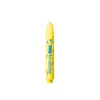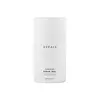What's inside
What's inside
 Key Ingredients
Key Ingredients

 Benefits
Benefits

 Concerns
Concerns

 Ingredients Side-by-side
Ingredients Side-by-side

Camellia Sinensis Leaf Water
MaskingGlycerin
HumectantCaprylic/Capric Triglyceride
MaskingButylene Glycol
HumectantHydrogenated Polyisobutene
EmollientDicaprylyl Carbonate
EmollientNiacinamide
SmoothingSucrose Stearate
EmollientWater
Skin Conditioning1,2-Hexanediol
Skin ConditioningBehenyl Alcohol
EmollientGlyceryl Stearate
EmollientArginine
MaskingAcrylates/C10-30 Alkyl Acrylate Crosspolymer
Emulsion StabilisingLactobacillus/Punica Granatum Fruit Ferment Extract
Skin ConditioningCarbomer
Emulsion StabilisingBetaine
HumectantPanthenol
Skin ConditioningLactobacillus Ferment Lysate
Skin ConditioningPrunus Amygdalus Dulcis Oil
Skin ConditioningAdenosine
Skin ConditioningEthylhexylglycerin
Skin ConditioningPropanediol
SolventSodium Phytate
Pseudoalteromonas Ferment Extract
HumectantPlukenetia Volubilis Seed Oil
EmollientHydrolyzed Sodium Hyaluronate
Skin ConditioningCamellia Sinensis Leaf Extract
AntimicrobialCaprylyl Glycol
EmollientSodium Hyaluronate Crosspolymer
HumectantHydrolyzed Hyaluronic Acid
HumectantSodium Hyaluronate
HumectantBeta-Glucan
Skin ConditioningTocopherol
AntioxidantHyaluronic Acid
HumectantCamellia Sinensis Leaf Water, Glycerin, Caprylic/Capric Triglyceride, Butylene Glycol, Hydrogenated Polyisobutene, Dicaprylyl Carbonate, Niacinamide, Sucrose Stearate, Water, 1,2-Hexanediol, Behenyl Alcohol, Glyceryl Stearate, Arginine, Acrylates/C10-30 Alkyl Acrylate Crosspolymer, Lactobacillus/Punica Granatum Fruit Ferment Extract, Carbomer, Betaine, Panthenol, Lactobacillus Ferment Lysate, Prunus Amygdalus Dulcis Oil, Adenosine, Ethylhexylglycerin, Propanediol, Sodium Phytate, Pseudoalteromonas Ferment Extract, Plukenetia Volubilis Seed Oil, Hydrolyzed Sodium Hyaluronate, Camellia Sinensis Leaf Extract, Caprylyl Glycol, Sodium Hyaluronate Crosspolymer, Hydrolyzed Hyaluronic Acid, Sodium Hyaluronate, Beta-Glucan, Tocopherol, Hyaluronic Acid
Water
Skin ConditioningPropanediol
SolventSea Silt Extract
Skin ConditioningHydrolyzed Hyaluronic Acid
HumectantAdenosine
Skin ConditioningOlivine Extract
Skin ConditioningTremella Fuciformis Sporocarp Extract
AntioxidantBetaine
HumectantGlycerin
HumectantCarbomer
Emulsion StabilisingHydroxyethylcellulose
Emulsion StabilisingEthylhexylglycerin
Skin ConditioningCaprylyl Glycol
EmollientSodium Citrate
BufferingTocopherol
AntioxidantBenzyl Alcohol
PerfumingGlyceryl Caprylate
EmollientGlyceryl Undecylenate
EmollientPotassium Sorbate
PreservativeDisodium Phosphate
BufferingSodium Phosphate
BufferingSodium Metabisulfite
AntioxidantPhenoxyethanol
PreservativeSodium Hydroxide
BufferingSodium Nitrate
SoothingWater, Propanediol, Sea Silt Extract, Hydrolyzed Hyaluronic Acid, Adenosine, Olivine Extract, Tremella Fuciformis Sporocarp Extract, Betaine, Glycerin, Carbomer, Hydroxyethylcellulose, Ethylhexylglycerin, Caprylyl Glycol, Sodium Citrate, Tocopherol, Benzyl Alcohol, Glyceryl Caprylate, Glyceryl Undecylenate, Potassium Sorbate, Disodium Phosphate, Sodium Phosphate, Sodium Metabisulfite, Phenoxyethanol, Sodium Hydroxide, Sodium Nitrate
 Reviews
Reviews

Ingredients Explained
These ingredients are found in both products.
Ingredients higher up in an ingredient list are typically present in a larger amount.
Adenosine is in every living organism. It is one of four components in nucleic acids that helps store our DNA.
Adenosine has many benefits when used. These benefits include hydrating the skin, smoothing skin, and reducing wrinkles. Once applied, adenosine increases collagen production. It also helps with improving firmness and tissue repair.
Studies have found adenosine may also help with wound healing.
In skincare products, Adenosine is usually derived from yeast.
Learn more about AdenosineBetaine is a common humectant (a substance that promotes retention of moisture). It's known to be gentle on the skin and can help balance hydration.
This ingredient is best for improving hydration and soothing irritated skin. Studies also show it helps even out skin tone.
Fun fact: Betaine is naturally created in the skin and body. The kind found within cosmetic products can be either plant-derived or synthetic.
Another name for betaine is trimethylglycine.
Learn more about BetaineCaprylyl Glycol is a humectant and emollient, meaning it attracts and preserves moisture.
It is a common ingredient in many products, especially those designed to hydrate skin. The primary benefits are retaining moisture, skin softening, and promoting a healthy skin barrier.
Though Caprylyl Glycol is an alcohol derived from fatty acids, it is not the kind that can dry out skin.
This ingredient is also used as a preservative to extend the life of products. It has slight antimicrobial properties.
Learn more about Caprylyl GlycolCarbomer is a polymer of acrylic acid. Its main role is to create a gel consistency.
A high amount of carbomer can cause pilling or balling up of products. Don't worry, most products contain 1% or less of carbomer.
Ethylhexylglycerin (we can't pronounce this either) is commonly used as a preservative and skin softener. It is derived from glyceryl.
You might see Ethylhexylglycerin often paired with other preservatives such as phenoxyethanol. Ethylhexylglycerin has been found to increase the effectiveness of these other preservatives.
Glycerin is already naturally found in your skin. It helps moisturize and protect your skin.
A study from 2016 found glycerin to be more effective as a humectant than AHAs and hyaluronic acid.
As a humectant, it helps the skin stay hydrated by pulling moisture to your skin. The low molecular weight of glycerin allows it to pull moisture into the deeper layers of your skin.
Hydrated skin improves your skin barrier; Your skin barrier helps protect against irritants and bacteria.
Glycerin has also been found to have antimicrobial and antiviral properties. Due to these properties, glycerin is often used in wound and burn treatments.
In cosmetics, glycerin is usually derived from plants such as soybean or palm. However, it can also be sourced from animals, such as tallow or animal fat.
This ingredient is organic, colorless, odorless, and non-toxic.
Glycerin is the name for this ingredient in American English. British English uses Glycerol/Glycerine.
Learn more about GlycerinHydrolyzed Hyaluronic Acid is a form of hyaluronic acid. It is created by the hydrolysis of hyaluronic acid with a high molecular weight. Once created, Hydrolyzed Hyaluronic Acid has a low molecular weight.
Low molecular weight HA has been shown to hydrate and increase elasticity of the skin. Increasing elasticity is also associated with reduction of wrinkle depth.
One study found topical low molecular weight hyaluronic acid may be considered for the treatment of rosacea in the adult population. However, we always recommend speaking with a professional about your skin concerns.
Hyaluronic acids are a humectant. This means they draw moisture from the air. Hyaluronic acids help moisturize, soothe, and protect the skin.
Read more about other common forms of hyaluronic acid:
Learn more about Hydrolyzed Hyaluronic AcidPropanediol is an all-star ingredient. It softens, hydrates, and smooths the skin.
It’s often used to:
Propanediol is not likely to cause sensitivity and considered safe to use. It is derived from corn or petroleum with a clear color and no scent.
Learn more about PropanediolTocopherol (also known as Vitamin E) is a common antioxidant used to help protect the skin from free-radicals and strengthen the skin barrier. It's also fat soluble - this means our skin is great at absorbing it.
Vitamin E also helps keep your natural skin lipids healthy. Your lipid skin barrier naturally consists of lipids, ceramides, and fatty acids. Vitamin E offers extra protection for your skin’s lipid barrier, keeping your skin healthy and nourished.
Another benefit is a bit of UV protection. Vitamin E helps reduce the damage caused by UVB rays. (It should not replace your sunscreen). Combining it with Vitamin C can decrease sunburned cells and hyperpigmentation after UV exposure.
You might have noticed Vitamin E + C often paired together. This is because it is great at stabilizing Vitamin C. Using the two together helps increase the effectiveness of both ingredients.
There are often claims that Vitamin E can reduce/prevent scarring, but these claims haven't been confirmed by scientific research.
Learn more about TocopherolWater. It's the most common cosmetic ingredient of all. You'll usually see it at the top of ingredient lists, meaning that it makes up the largest part of the product.
So why is it so popular? Water most often acts as a solvent - this means that it helps dissolve other ingredients into the formulation.
You'll also recognize water as that liquid we all need to stay alive. If you see this, drink a glass of water. Stay hydrated!
Learn more about Water